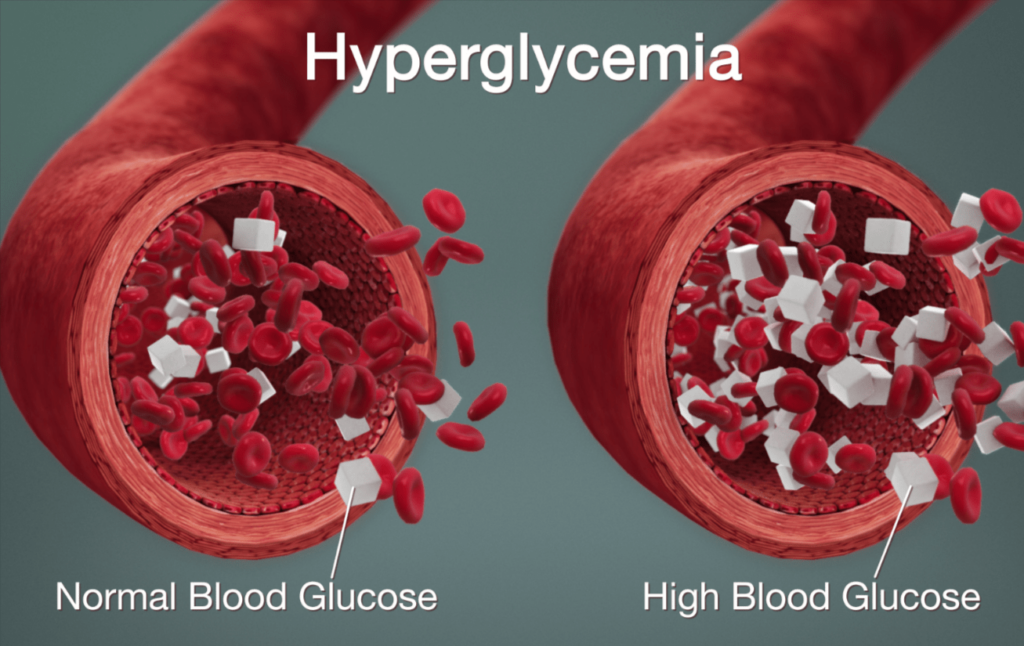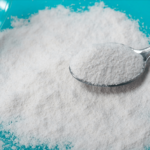The management of hyperglycemia varies based on several factors, including the frequency and severity of your high blood sugar episodes, as well as your age, general health, and cognitive abilities.
The American Diabetes Association (ADA) emphasizes the importance of a customized treatment plan for each individual with diabetes. Although the ADA provides guidelines for selecting appropriate medications, treatment decisions should be tailored to each person’s unique needs.
This article outlines strategies for managing hyperglycemia at home, potential medications for treatment, and indicators that you should reach out to your healthcare provider.
Lifestyle
Lifestyle changes play a crucial role in managing hyperglycemia. Consistency and support are essential for successful lifestyle adjustments.
Your healthcare provider will guide you through diabetes self-management education (DSME). DSME equips you with essential tools to address key areas such as:
- Understanding the impact of hyperglycemia on your physical and mental well-being
- Adopting a healthy diet
- Engaging in regular physical activity
- Monitoring your blood sugar levels
- Managing your condition effectively
Remember, diabetes medications are intended to complement these overall lifestyle changes.
Diet
Carbohydrates have the most significant impact on blood sugar levels. Consuming large quantities of carbohydrates, particularly refined grains (such as white bread, bagels, and pasta), sugary treats, and sweetened drinks, can elevate the risk of hyperglycemia.
To better manage blood sugar, it’s beneficial to follow a diet that controls carbohydrate intake and includes fiber-rich foods.
There is no universal “ideal” diet for diabetes. The American Diabetes Association recommends personalized medical nutrition therapy (MNT) tailored to each individual’s needs, ideally provided by a registered dietitian with expertise in diabetes management.
Research indicates that MNT from a dietitian can lead to improvements in A1C levels, a key measure for diabetes management. This approach can reduce A1C by 0.3% to 1% for people with type 1 diabetes and by 0.5% to 2% for those with type 2 diabetes.
Exercise
Interrupting long periods of inactivity and preventing extended sitting can help reduce the risk of developing type 2 diabetes for those at risk. Regular physical activity is also beneficial for managing blood sugar levels in individuals with diabetes, as it aids in lowering hyperglycemia by utilizing glucose.
For instance, taking a walk after a large meal can help lower excess blood sugar. Consistent exercise is crucial for weight management, which can further aid in controlling hyperglycemia and enhancing overall health.
However, it’s important to avoid exercise if your blood sugar level is above 240 mg/dL and you have ketones present. Exercising under these conditions can worsen hyperglycemia.
Always consult with your healthcare provider before starting a new exercise regimen.
Impact of Weight Loss on Blood Sugar
Losing weight can help lower blood sugar levels by boosting insulin sensitivity.
The American Diabetes Association highlights that even modest, ongoing weight loss can slow the shift from prediabetes to type 2 diabetes and aid in managing type 2 diabetes. Research has shown that adhering to a very low-calorie diet might even lead to diabetes remission, even for those who have had diabetes for several years.
Weight loss is particularly effective in controlling high blood sugar during the early phases of diabetes or prediabetes when insulin production is still relatively intact. Starting with a weight reduction of around 5% of your body weight is a practical goal. Generally, losing more weight tends to result in further decreases in blood sugar levels.
If you’re taking medications and experience hypoglycemia while losing weight, it may be necessary to adjust or discontinue your medication.
Quitting Smoking
Smoking might influence elevated blood sugar levels and contribute to the onset of type 2 diabetes. For those with prediabetes or an increased risk of diabetes, ceasing smoking could be beneficial in preventing both diabetes and high blood sugar.
Monitoring Blood Sugar
Frequent blood sugar checks are linked to lower A1C levels in individuals with type 1 diabetes. By regularly monitoring blood sugar, people with diabetes can assess their treatment’s effectiveness and manage elevated blood sugar more effectively.
Identifying patterns of high blood sugar early on through regular testing enables timely intervention and adjustment of your management strategies to better control hyperglycemia.
Medications
Healthcare professionals concur that modifying your diet and lifestyle is crucial for maintaining proper blood sugar control. However, for some individuals, medications play a vital role in diabetes management. In certain cases, these prescriptions are necessary to effectively manage the condition.
Oral Medications for Blood Sugar Control
Various medications are available to help regulate blood glucose levels, such as:
- Biguanides
- Sulfonylureas
- Thiazolidinediones
- Meglitinides
- Dopamine-2 agonists
- Alpha-glucosidase inhibitors
- Sodium-glucose transporter 2 (SGLT2) inhibitors
- Dipeptidyl peptidase-4 (DPP-4) inhibitors
- Bile acid sequestrants
Metformin, a widely used biguanide, is often the first choice for individuals newly diagnosed with type 2 diabetes. If the maximum dose of Metformin does not achieve or maintain target A1C levels within three months, a second medication might be added.
The American Diabetes Association (ADA) offers a comprehensive guideline for healthcare providers on medication selection for managing hyperglycemia. This guideline evaluates factors such as age, gender, weight, medical history, duration of diabetes, blood glucose levels, lifestyle, and education.
The ADA recommends a personalized approach when choosing medications. This includes assessing effectiveness, the risk of low blood sugar, effects on body weight, possible side effects, costs, and patient preferences.
In cases where individuals are newly diagnosed with diabetes and experience severe hyperglycemia, insulin therapy may be initiated immediately to lower their blood sugar levels. Similarly, people with long-standing type 2 diabetes, particularly those who frequently experience high blood sugar levels, might also need to begin insulin therapy.
It’s not uncommon for individuals with type 2 diabetes to reduce or even discontinue their insulin therapy once their blood sugar levels stabilize, especially if they have lost weight.
Since each case is unique, it’s important to consult with your healthcare provider to set clear goals for insulin treatment and to avoid confusion or undue concern.
Additional Injectable Medications
GLP-1 receptor agonists, including well-known brands like Ozempic (semaglutide) and Victoza (liraglutide), work by imitating a hormone that prompts the body to release insulin. These medications not only help in lowering blood sugar levels but also offer additional benefits, such as significant weight loss and a decreased risk of cardiovascular and kidney issues.
While these medications are primarily researched for type 2 diabetes, studies on liraglutide in type 1 diabetes have demonstrated that it can effectively lower blood sugar, reduce body weight, and decrease the amount of insulin needed.
An oral version of semaglutide is available for those who prefer not to use injections.
Pramlintide, marketed under the name Symlin, is an injectable medication used for managing both type 1 diabetes and type 2 diabetes in patients who are already on insulin. It works by slowing gastric emptying and lowering blood sugar levels through reduced glucagon secretion.
For individuals with type 1 diabetes, pramlintide can aid in weight loss if there is excess weight, help manage blood sugar levels, and potentially reduce insulin requirements.
Tzield (teplizumab) is an injectable drug approved by the FDA to postpone the progression from stage 2 to stage 3 type 1 diabetes in individuals aged 8 and older. Tzield is the first FDA-approved treatment for delaying the onset of stage 3 type 1 diabetes and is administered intravenously once a day for 14 days.
Handling Emergency Situations
If you find yourself in the emergency room with high blood sugar levels and are diagnosed with Diabetic Ketoacidosis (DKA) or Hyperglycemic Hyperosmolar Nonketotic Syndrome (HHNS), it is crucial to receive thorough monitoring and a detailed clinical evaluation.
Treatment will focus on addressing elevated blood sugar levels, correcting electrolyte imbalances and ketosis, and restoring fluid volume in the body.
It’s also essential to identify and address any underlying issues contributing to DKA, such as infections.
Depending on the severity of the condition, management of DKA may involve intravenous or subcutaneous insulin therapy along with careful fluid management.
Complementary and Alternative Approaches
In addition to standard treatments for controlling high blood sugar, incorporating specific supplements and mental well-being practices can be beneficial.
Cinnamon
The effectiveness of cinnamon in lowering blood sugar remains uncertain. Some studies suggest that consuming up to two teaspoons daily may reduce fasting blood sugar, while others do not show significant results.
As with many diabetes management strategies, the benefits of cinnamon can vary from person to person. However, adding a dash of cinnamon to foods like coffee, yogurt, oatmeal, or toast is generally considered safe.
Apple Cider Vinegar
Apple cider vinegar is made from fermented apple juice. Research featured in the Journal of Functional Foods indicated that individuals at risk for type 2 diabetes, who consumed 8 ounces of Bragg’s Organic Apple Cider Vinegar Drink Sweet Stevia daily for 12 weeks, experienced a notable decrease in fasting blood sugar levels.
It is crucial to note that this study was conducted on individuals who did not have diabetes, and no significant changes were observed in blood sugar or hemoglobin A1C levels two hours post-meal.
Nonetheless, the study’s authors propose that incorporating one tablespoon of apple cider vinegar twice daily could aid in lowering fasting blood sugar levels.
Consider adding apple cider vinegar to your salad dressings or using it as a marinade for your protein—just a small amount can be effective.
Psychotherapy
When high blood sugar levels are linked to difficulties in self-care due to psychological or social issues, psychotherapy can address these underlying problems, potentially improving blood sugar control.
For those experiencing diabetes distress (DD), seeking therapy is essential for managing both hyperglycemia and related emotional challenges. DD refers to the “significant negative psychological reactions” tied to the emotional burdens and worries that come with managing a complex and demanding chronic illness like diabetes.
Remember, seeking help is both available and encouraged, with no stigma attached. It can assist you in improving self-care, enhancing your overall well-being, and achieving a better quality of life. Don’t hesitate to reach out if you need support.
Takeaway on Hyperglycemia
The approach to treating hyperglycemia varies based on the severity and duration of elevated blood sugar levels. The cornerstone of managing your blood sugar involves implementing lifestyle changes, such as adopting a healthier diet and engaging in regular physical activity. Your healthcare provider will assist in creating a tailored plan to meet your specific needs.
In addition to lifestyle adjustments, medication might be required. There are both injectable and oral medications available, and the choice of medication will depend on your individual requirements and type of diabetes. In certain cases, surgical options may be considered to aid in weight reduction or improve blood sugar control.


